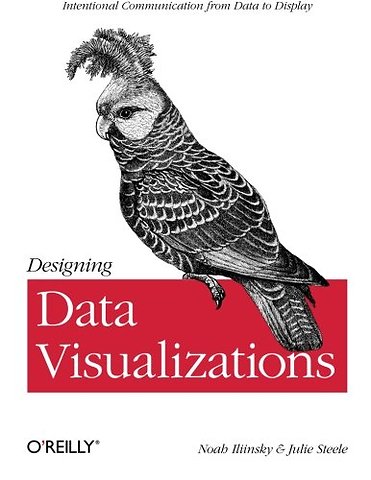


Julie Steele is an editor at O'Reilly Media interested in connecting people and ideas. She finds beauty in discovering new ways to understand complex systems, and so enjoys topics related to organizing, storing, and visualizing data.
Meer over de auteursDesigning Data Visualizations
Samenvatting
Data visualization is an efficient and effective medium for communicating large amounts of information, but the design process can often seem like an unexplainable creative endeavor. This concise book aims to demystify the design process by showing you how to use a linear decision-making process to encode your information visually.
Delve into different kinds of visualization, including infographics and visual art, and explore the influences at work in each one. Then learn how to apply these concepts to your design process.
-Learn data visualization classifications, including explanatory, exploratory, and hybrid
-Discover how three fundamental influences—the designer, the reader, and the data—shape what you create
-Learn how to describe the specific goal of your visualization and identify the supporting data
-Decide the spatial position of your visual entities with axes
-Encode the various dimensions of your data with appropriate visual properties, such as shape and color
-See visualization best practices and suggestions for encoding various specific data types
Specificaties
Over Noah Iliinsky
Inhoudsopgave
How This Book Is Organized;
What We Mean When We Say…;
Figures Used by Permission;
See the Color Figures Online;
Attributions and Permissions;
Safari® Books Online;
How to Contact Us;
Acknowledgments;
What Will You Design?;
Chapter 1: Classifications of Visualizations;
1.1 Complexity;
1.2 Infographics versus Data Visualization;
1.3 Exploration versus Explanation;
1.4 Informative versus Persuasive versus Visual Art;
Chapter 2: Source Trinity: Ingredients of Successful Visualizations;
2.1 Designer;
2.2 Reader;
2.3 Data;
How Should You Design It?;
Chapter 3: Determine Your Goals and Supporting Data;
3.1 Knowledge Before Structure;
3.2 Avoiding TMI;
Chapter 4: Choose Appropriate Visual Encodings;
4.1 Choosing Appropriate Visual Encodings;
4.2 Selecting Structure;
Chapter 5: First, Place;
5.1 Position: Layout and Axes;
5.2 The Meaning of Placement and Proximity;
5.3 Patterns of Organization (and More!);
Chapter 6: Apply Your Encodings Well;
6.1 Color;
6.2 Size;
6.3 Text and Typography;
6.4 Shape;
6.5 Lines;
6.6 Keys versus Direct Labeling of Data Points;
6.7 Pitfalls to Avoid;
6.8 Conclusion;
Additional Resources;
Tools?;
Reading List?;
Checklist;
Determine Your Goals and Supporting Data;
Consider Your Reader;
Select Axes, Layout, and Placement;
Evaluate Your Encoding Entities;
Reveal the Data’s Relationships;
Choose Titles, Tags, and Labels;
Analyze Patterns and Consistency;
Anderen die dit boek kochten, kochten ook
Net verschenen
Rubrieken
- aanbestedingsrecht
- aansprakelijkheids- en verzekeringsrecht
- accountancy
- algemeen juridisch
- arbeidsrecht
- bank- en effectenrecht
- bestuursrecht
- bouwrecht
- burgerlijk recht en procesrecht
- europees-internationaal recht
- fiscaal recht
- gezondheidsrecht
- insolventierecht
- intellectuele eigendom en ict-recht
- management
- mens en maatschappij
- milieu- en omgevingsrecht
- notarieel recht
- ondernemingsrecht
- pensioenrecht
- personen- en familierecht
- sociale zekerheidsrecht
- staatsrecht
- strafrecht en criminologie
- vastgoed- en huurrecht
- vreemdelingenrecht





